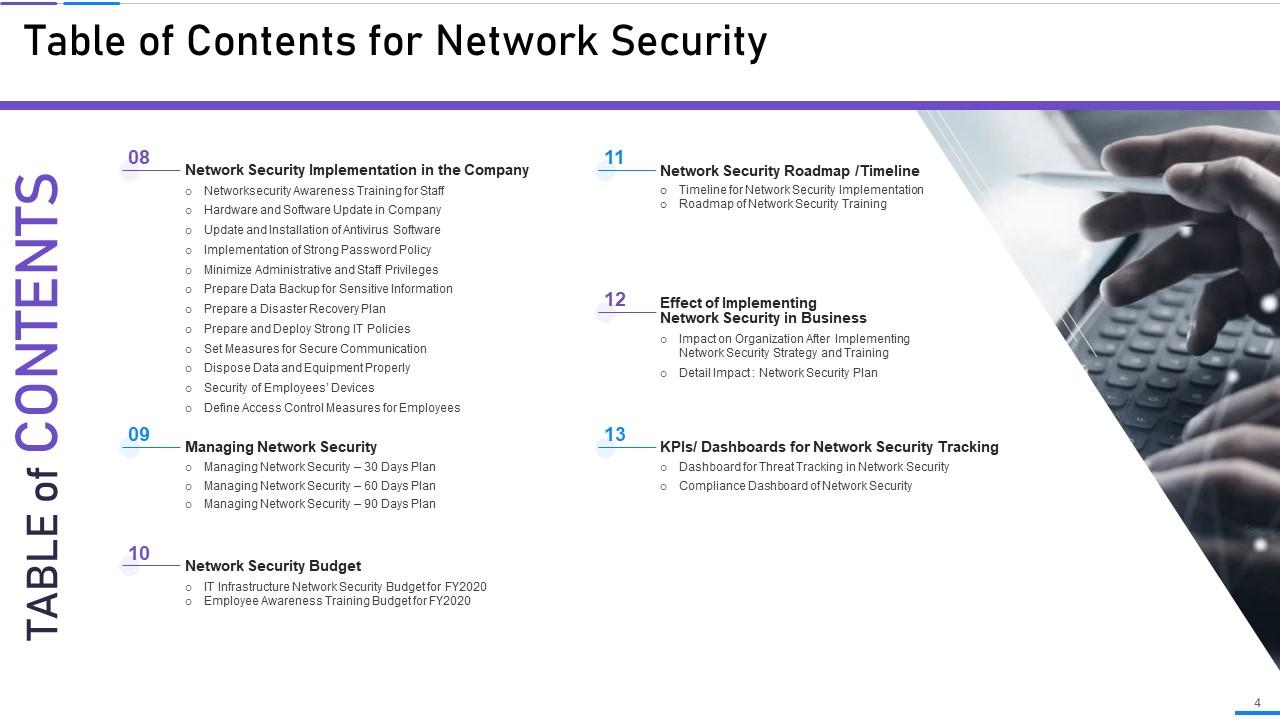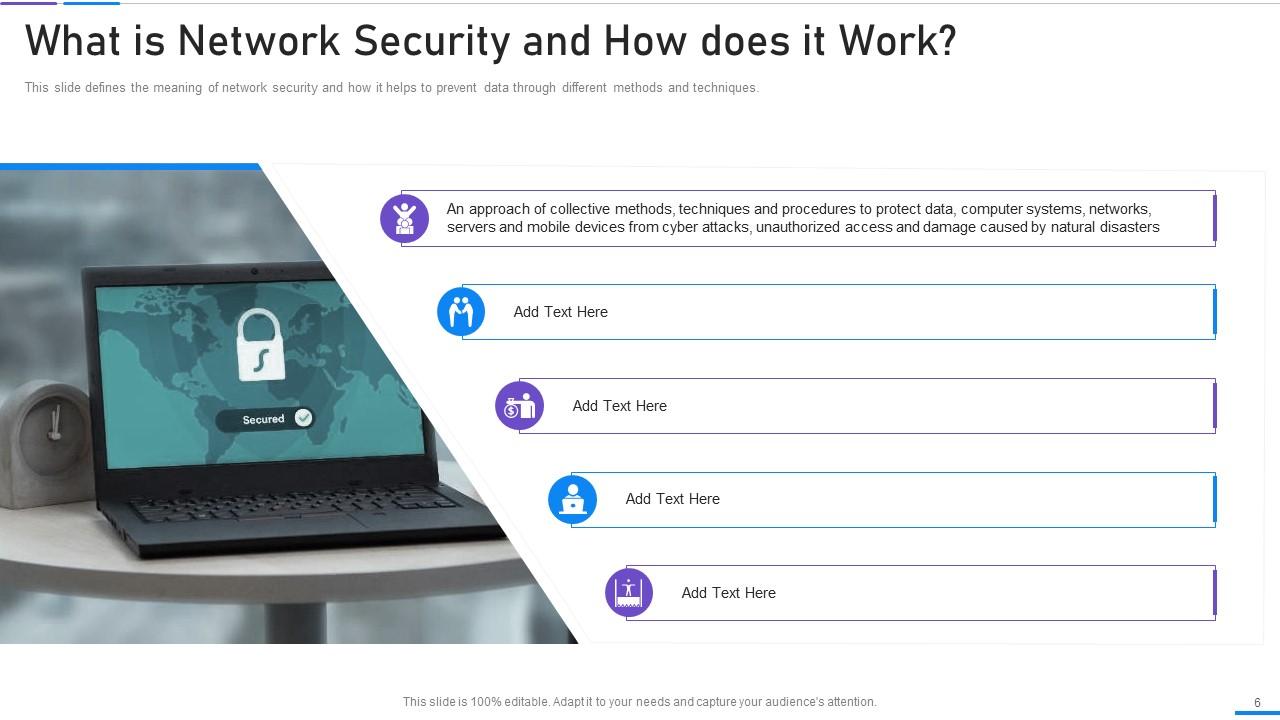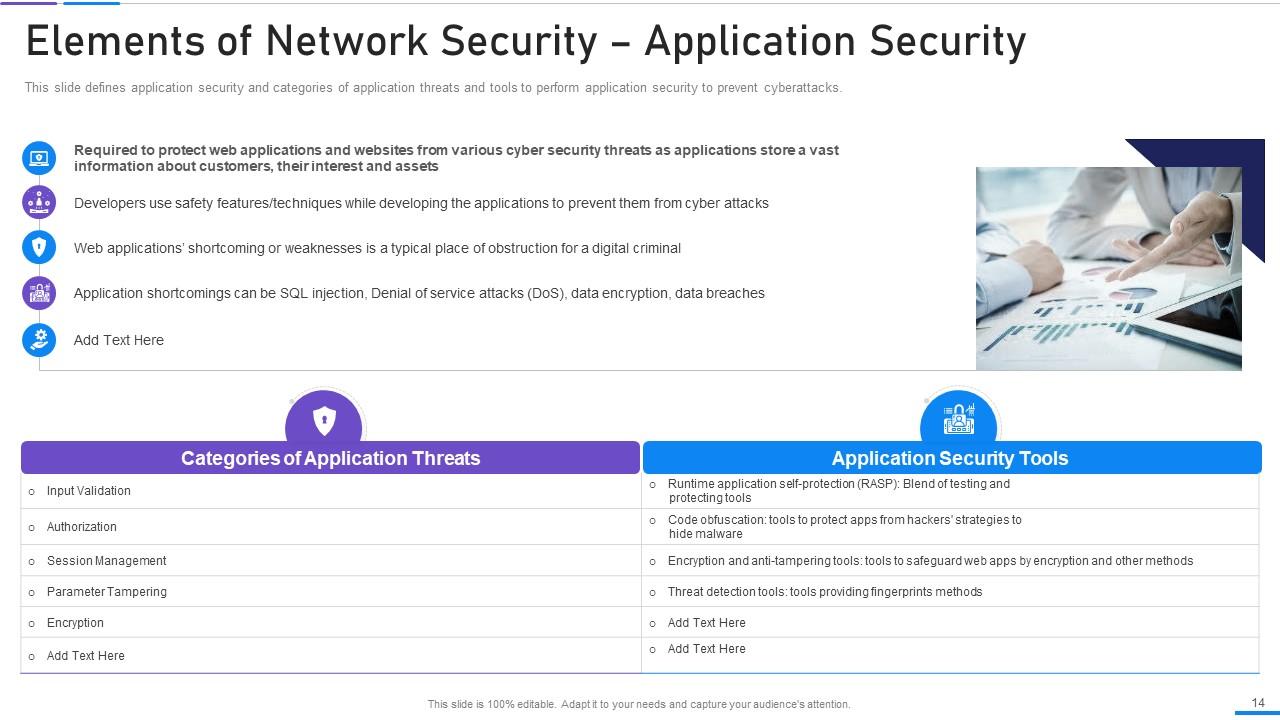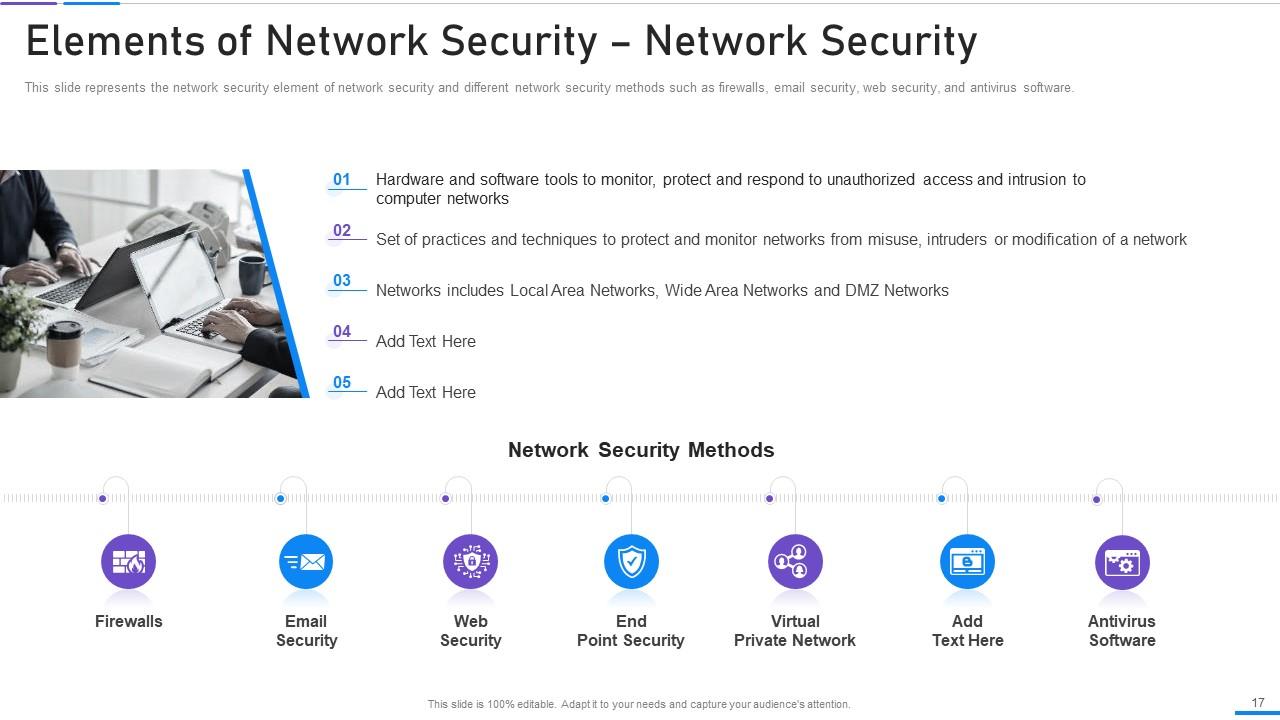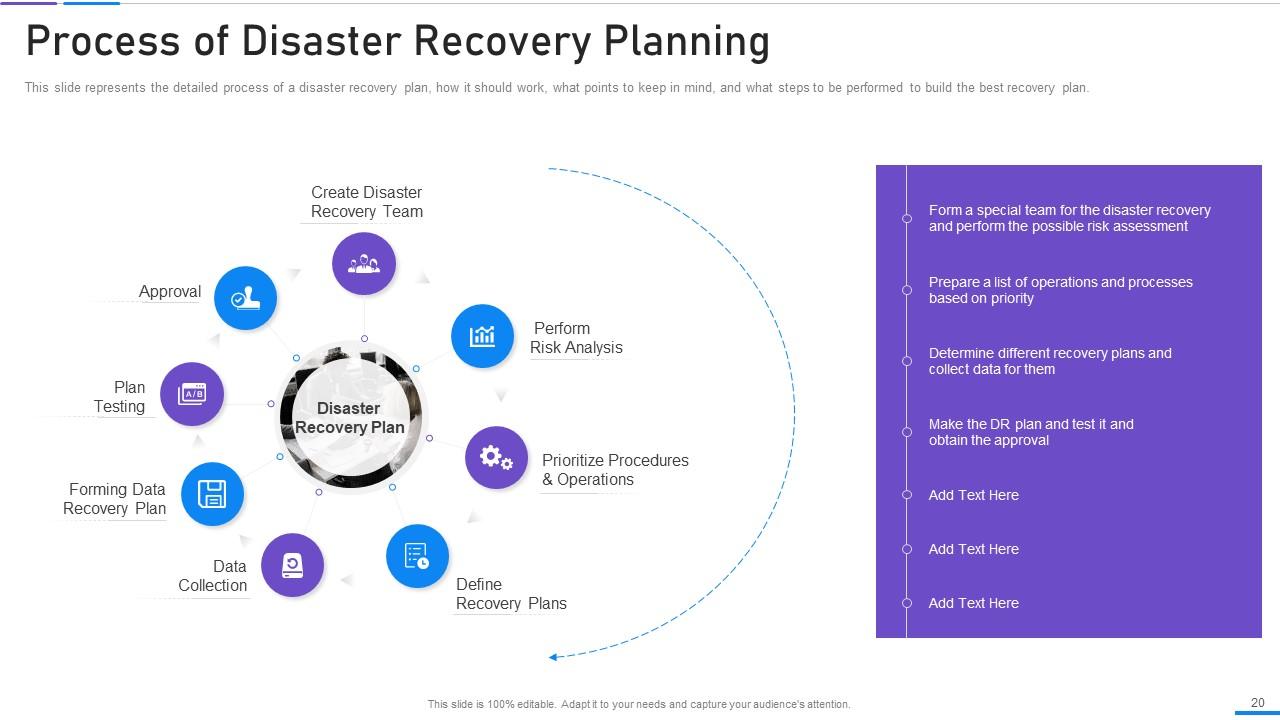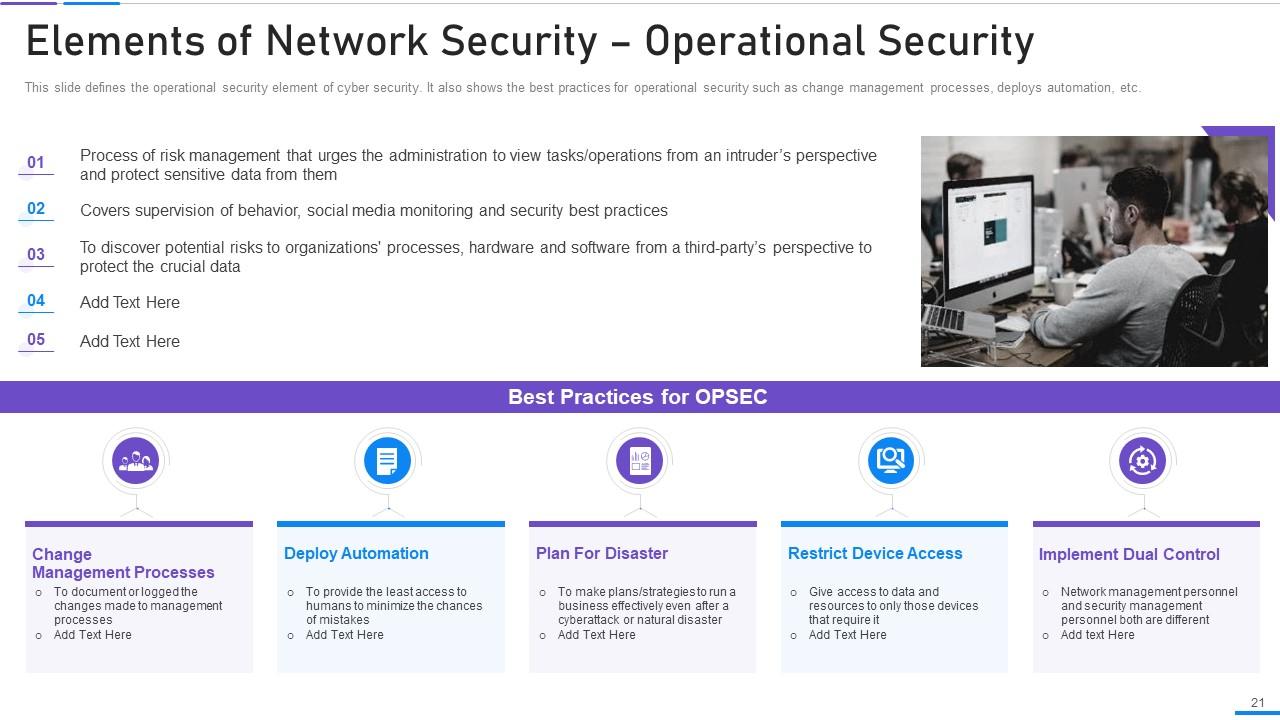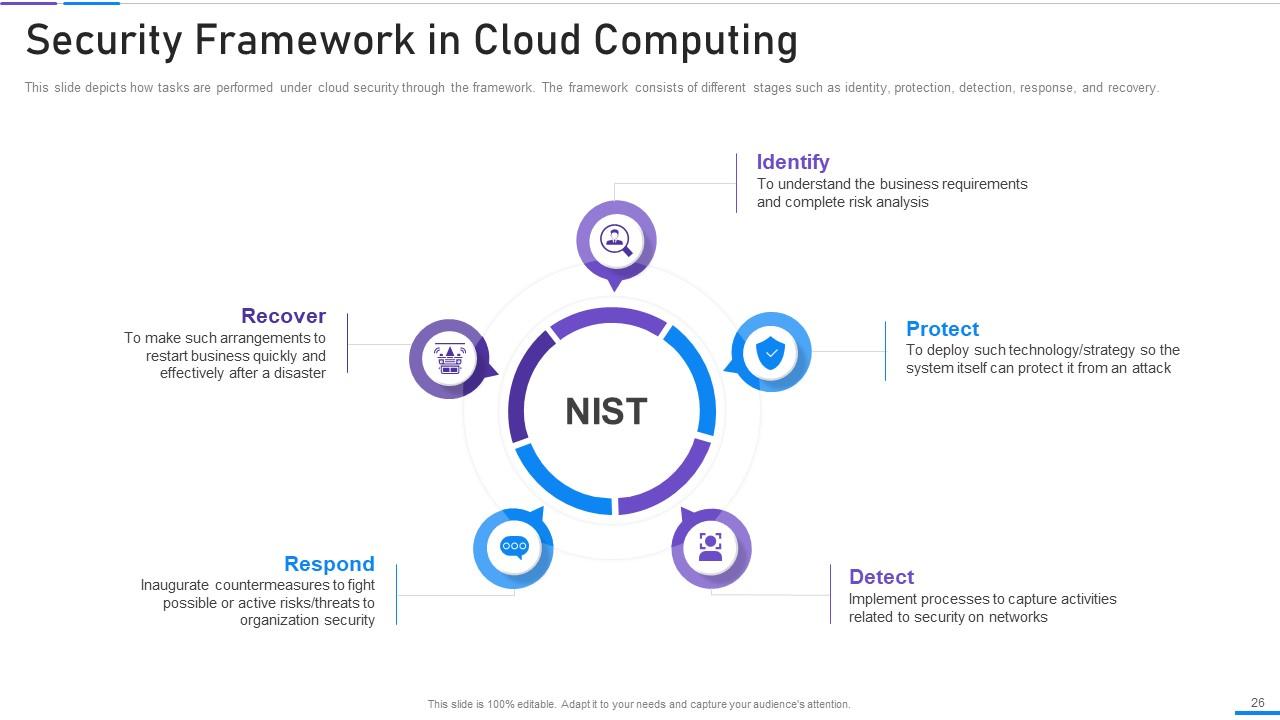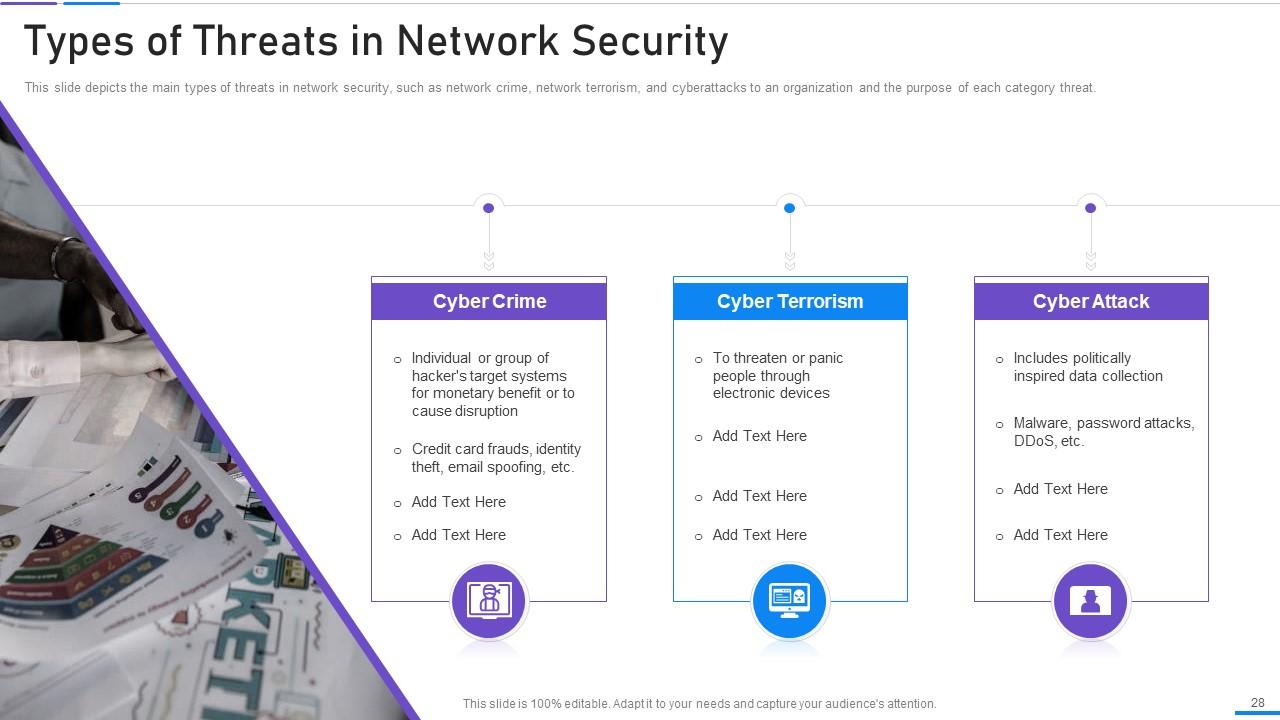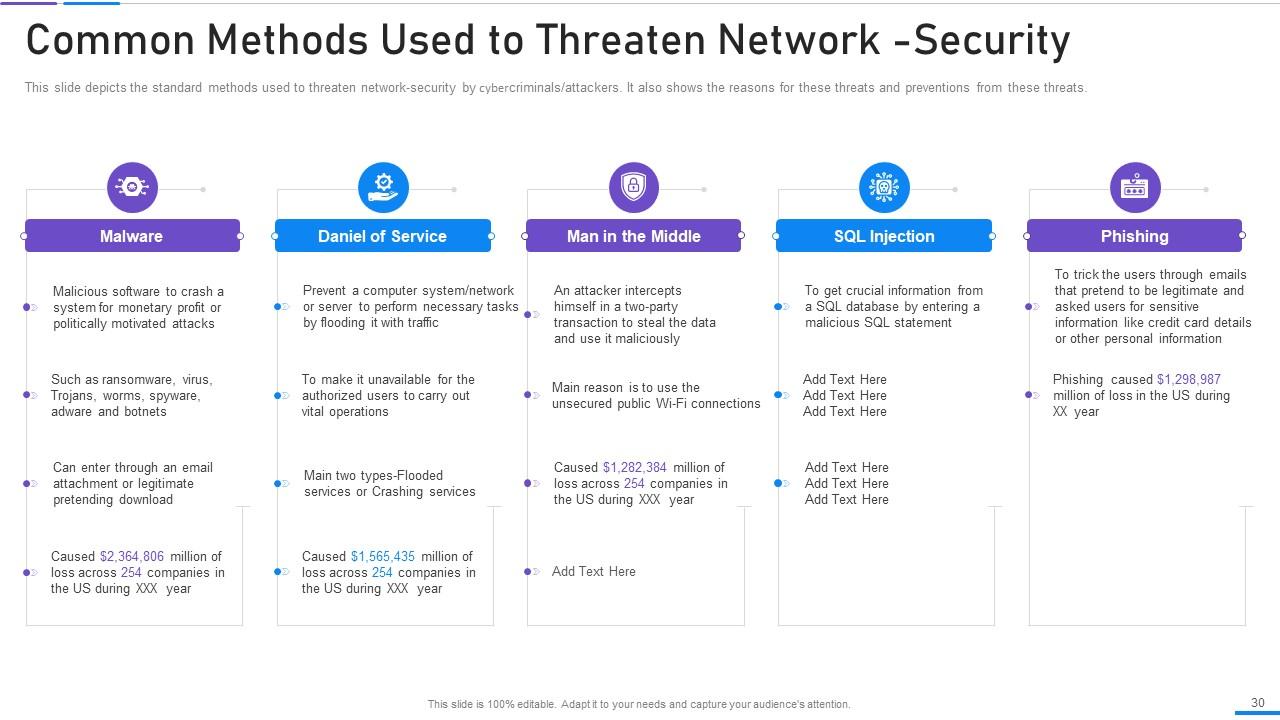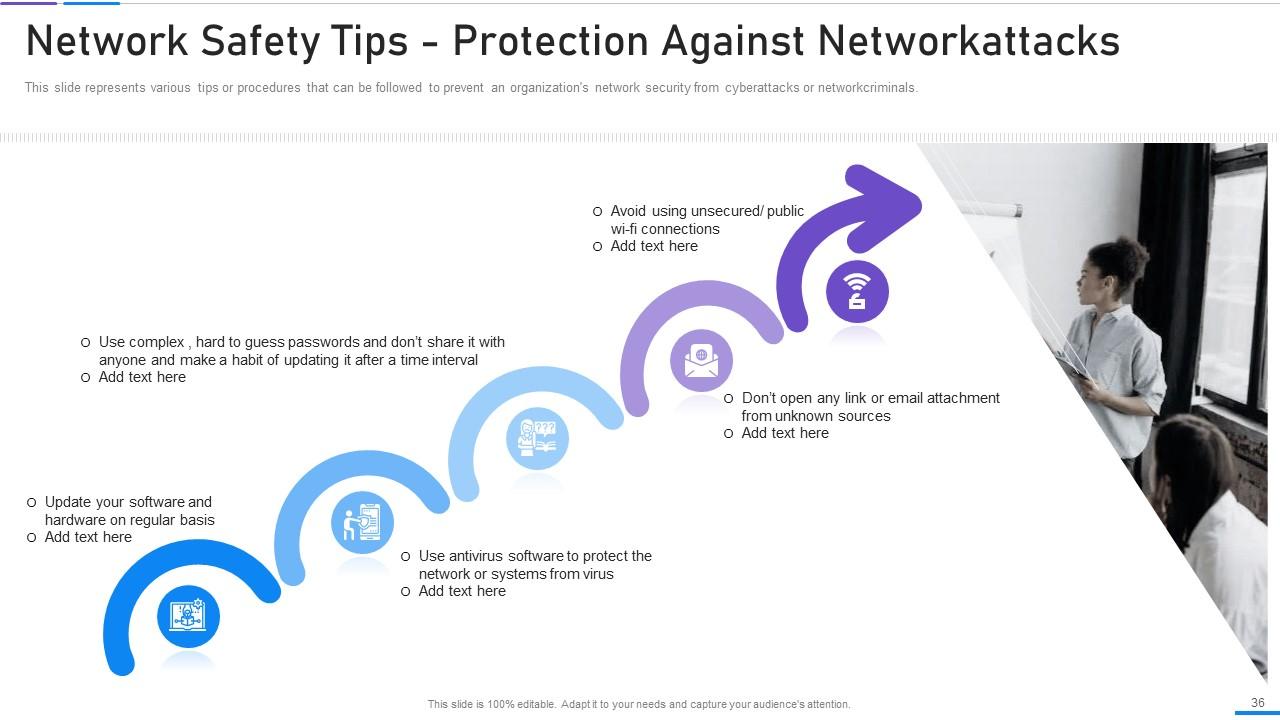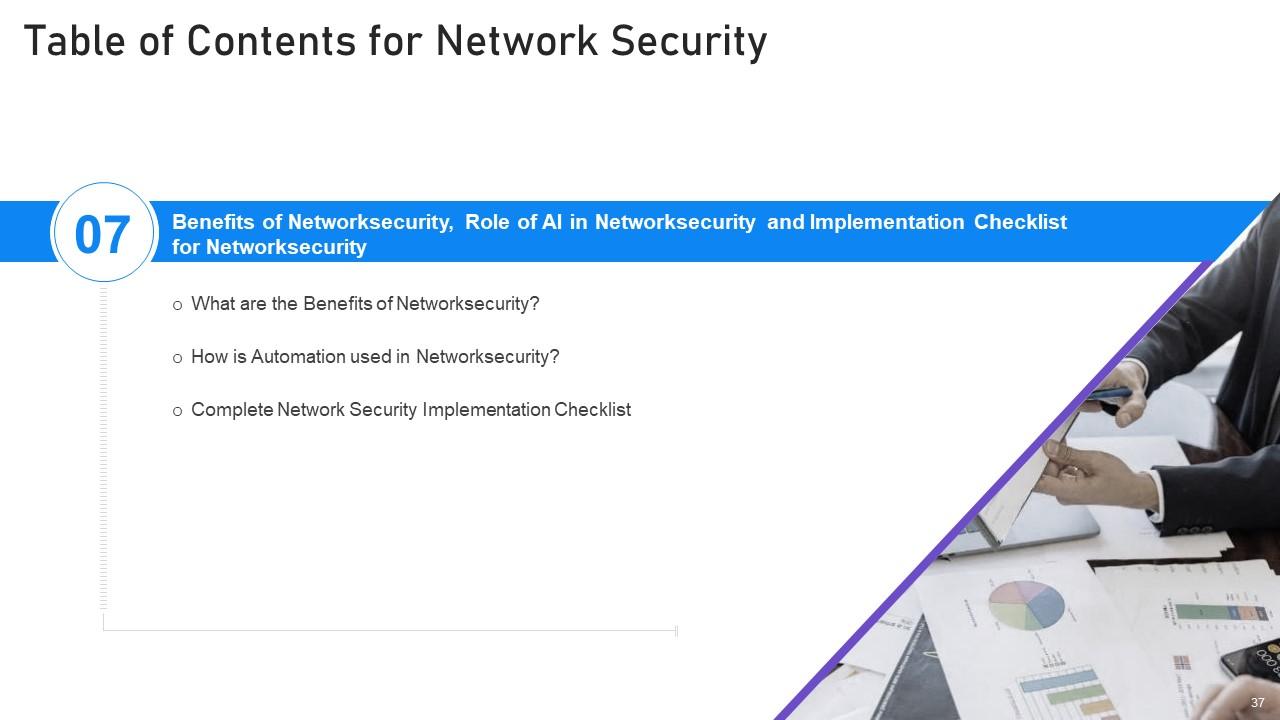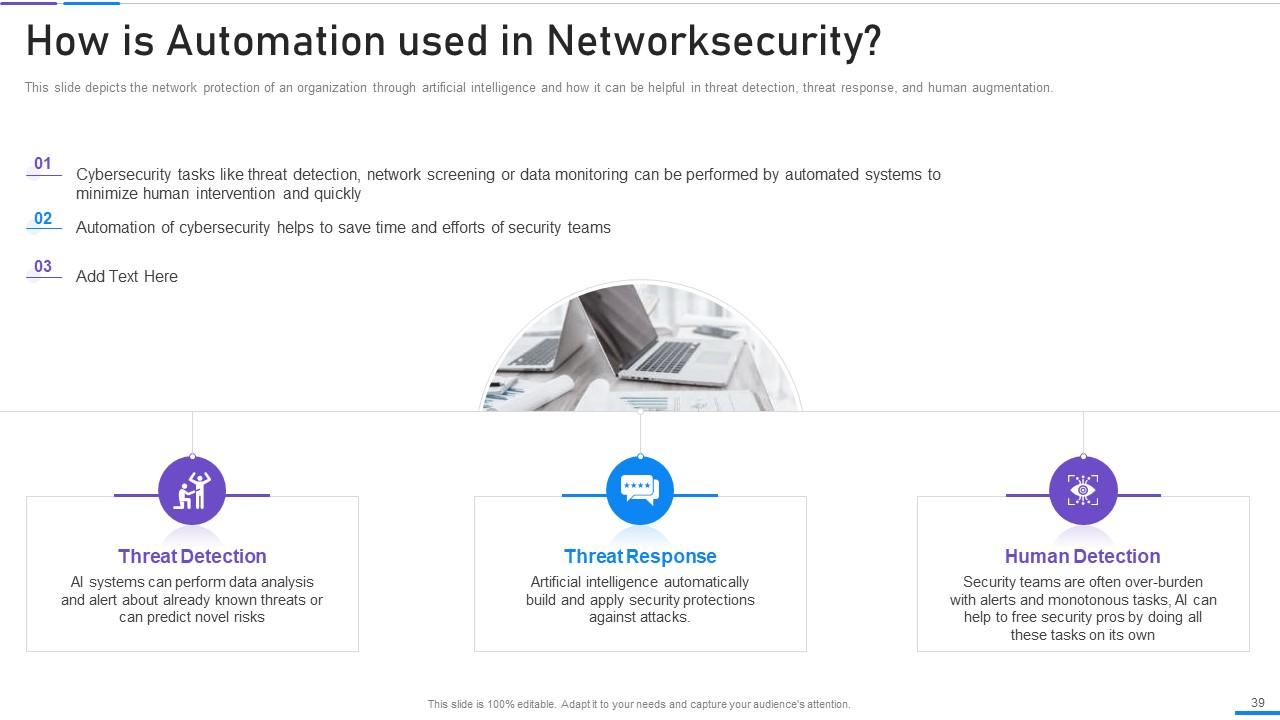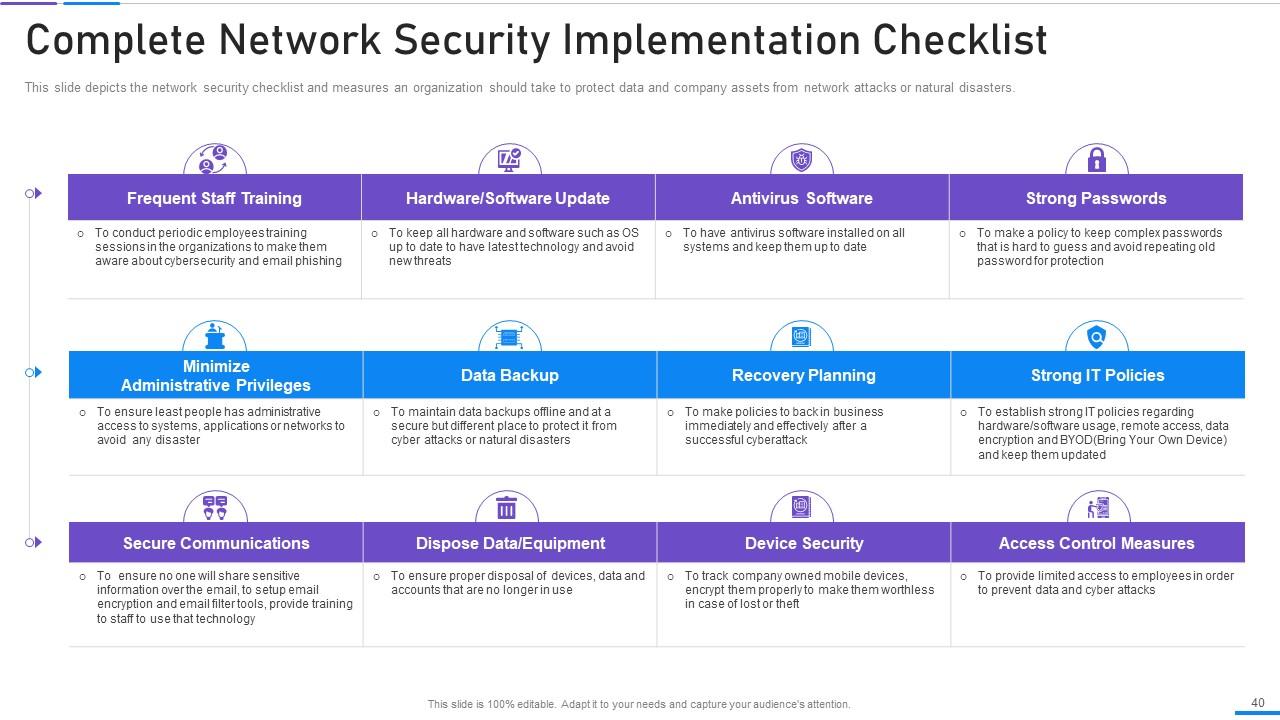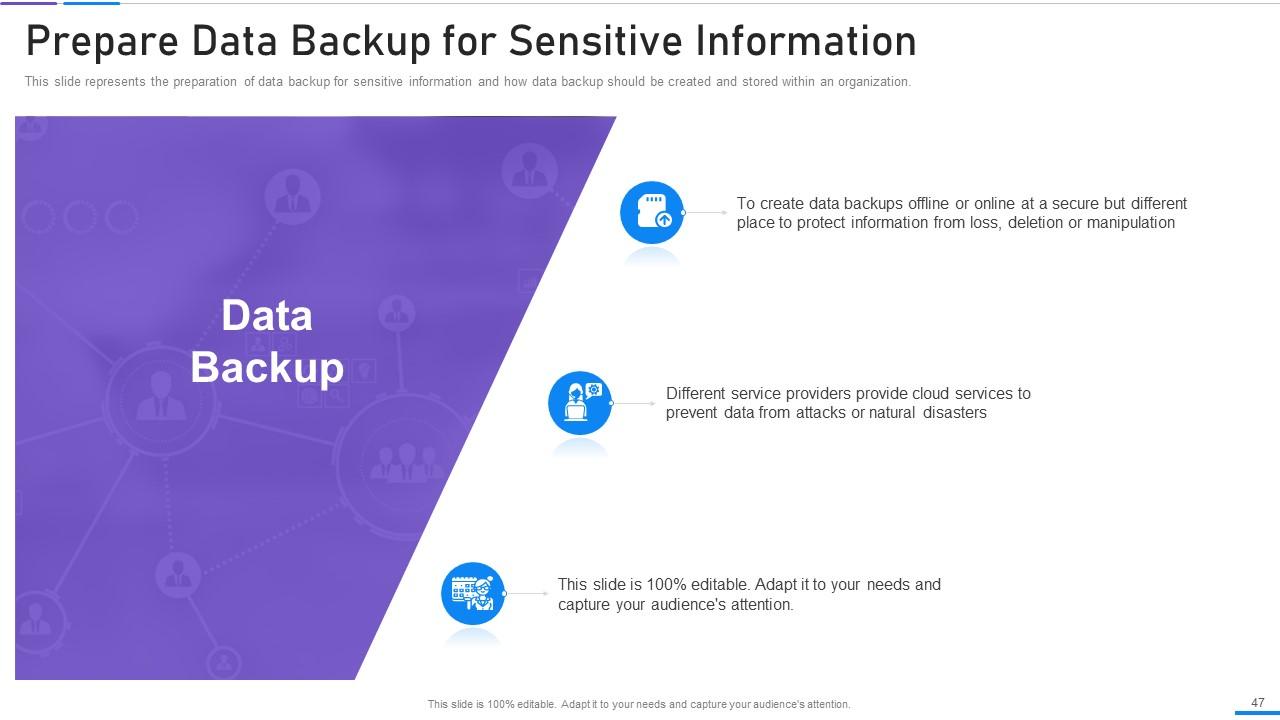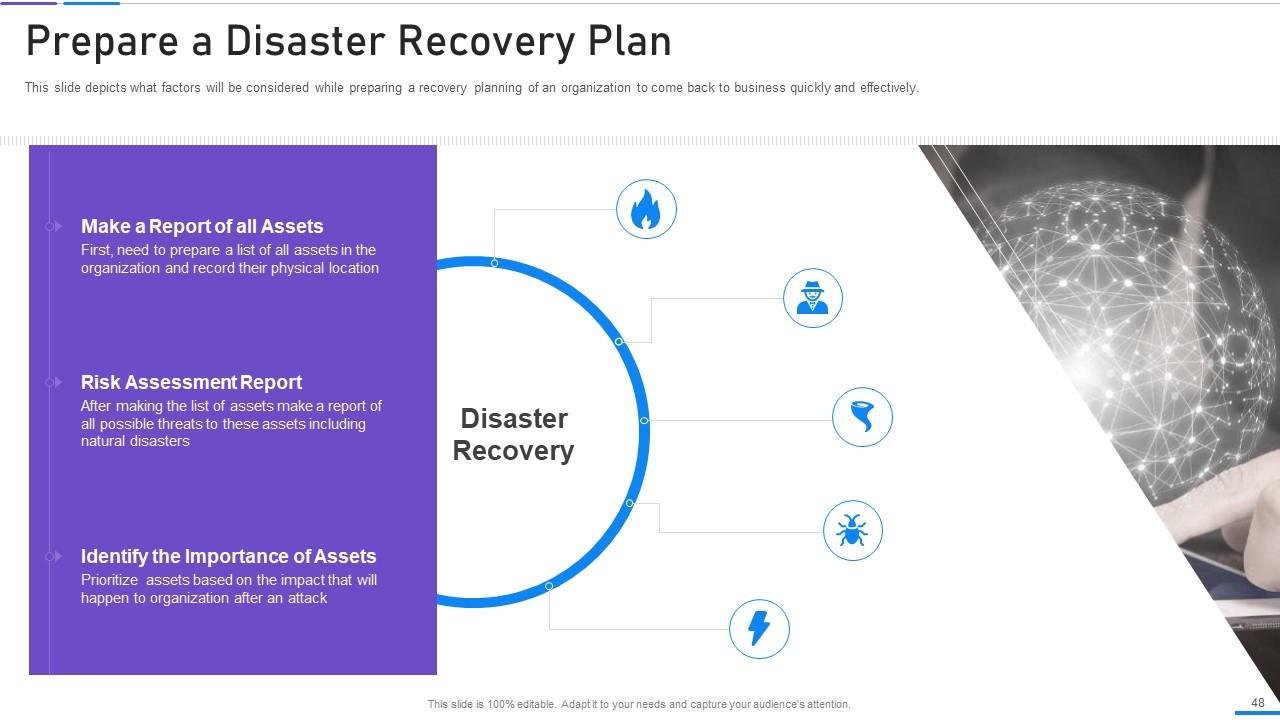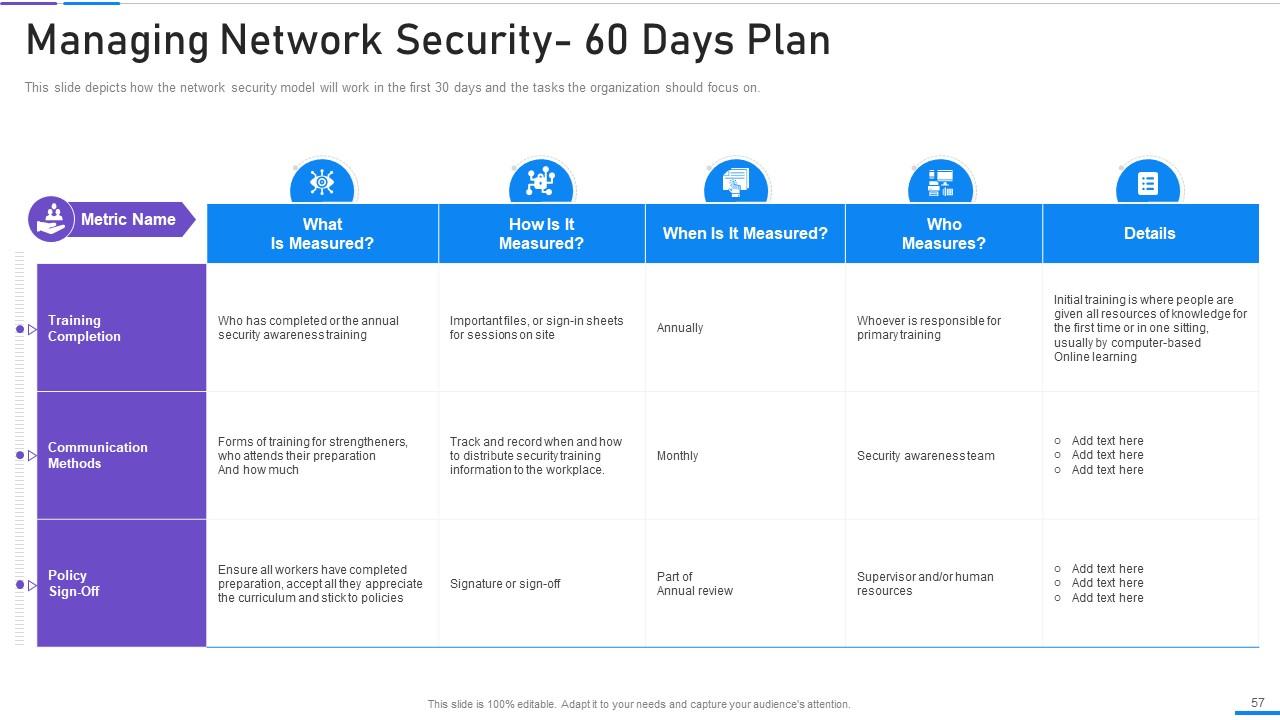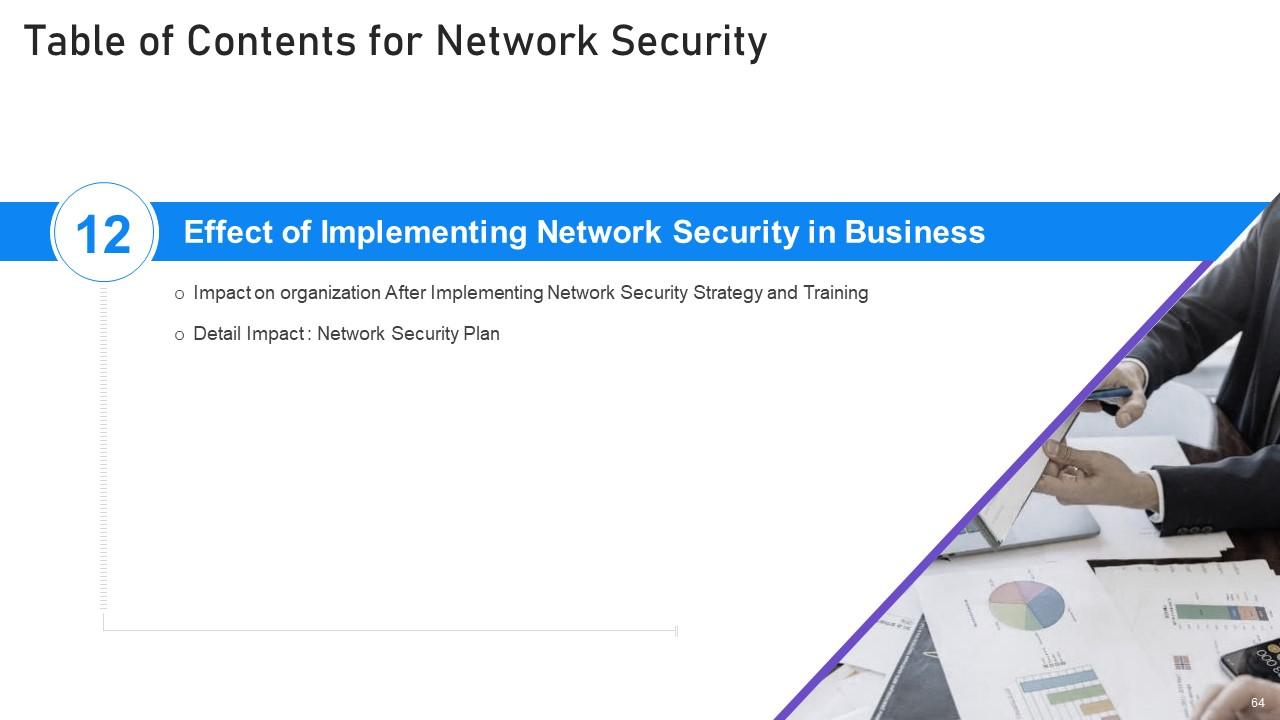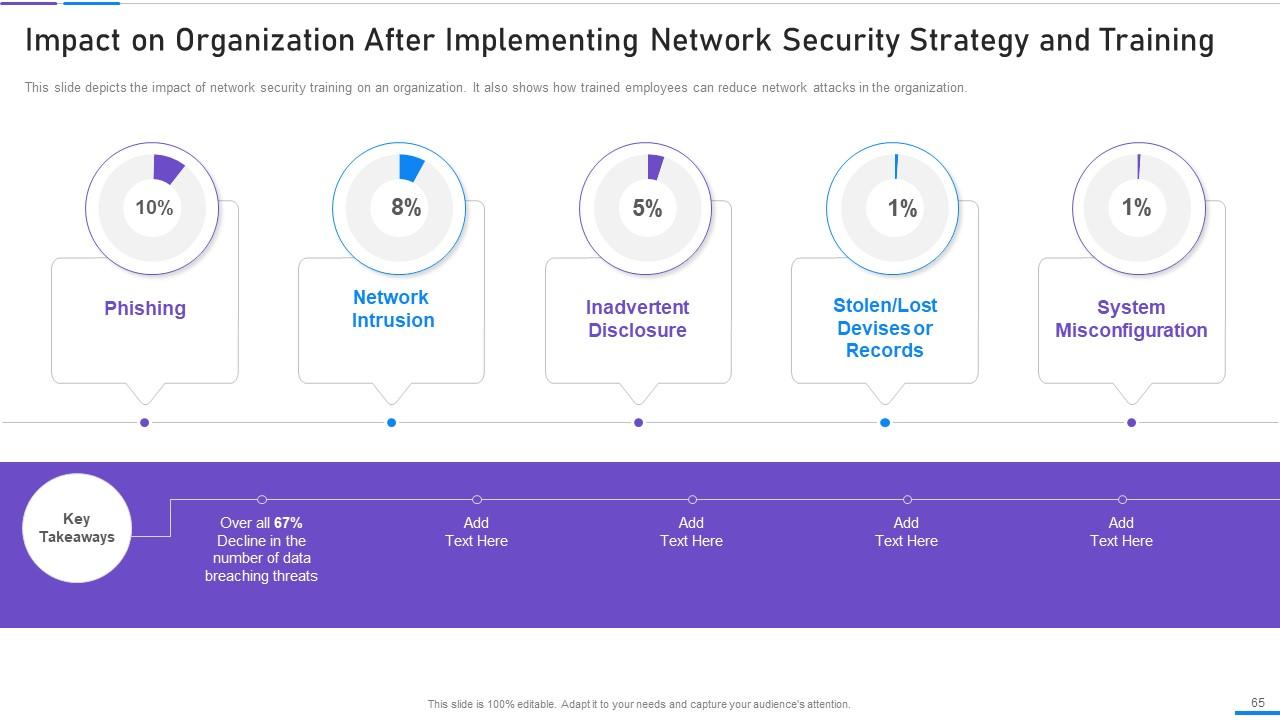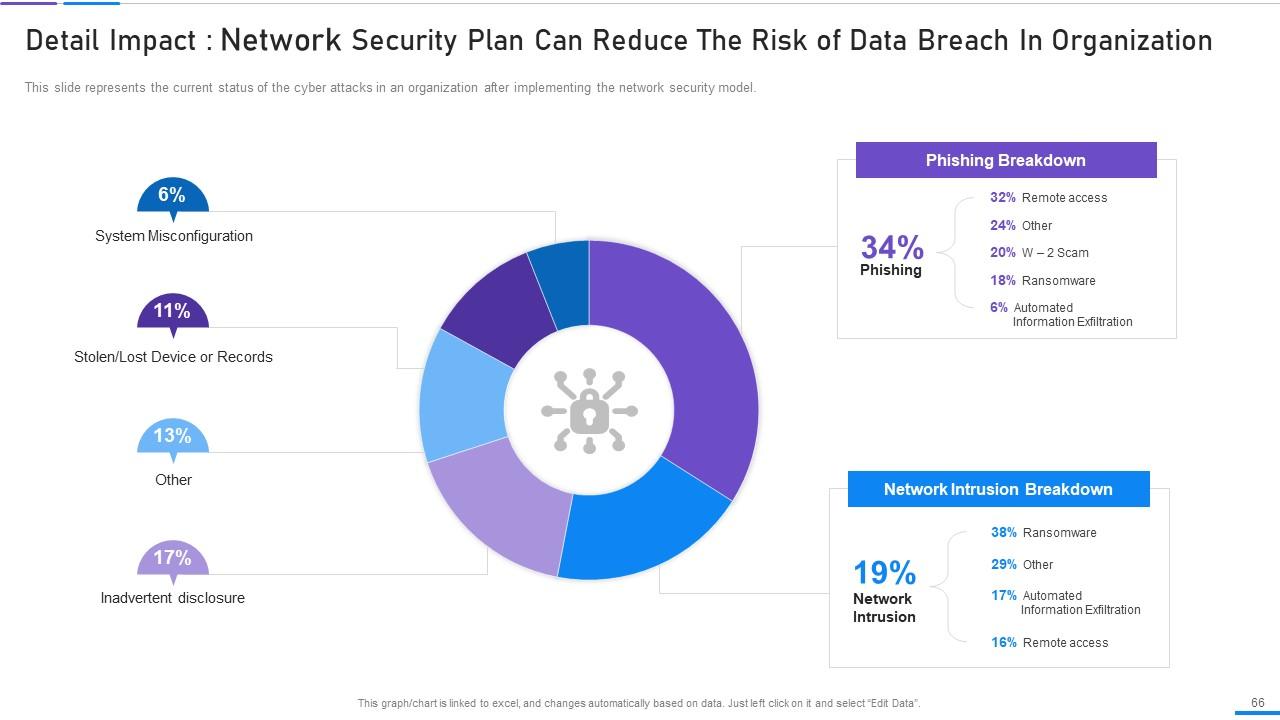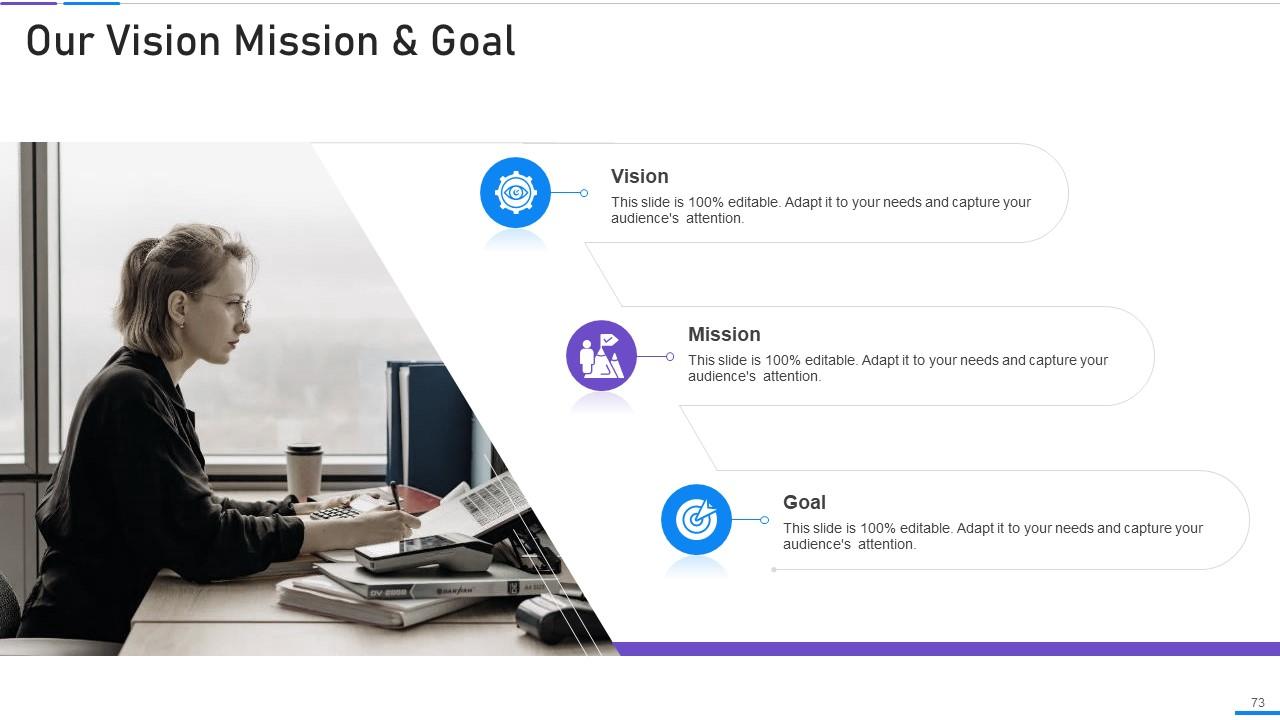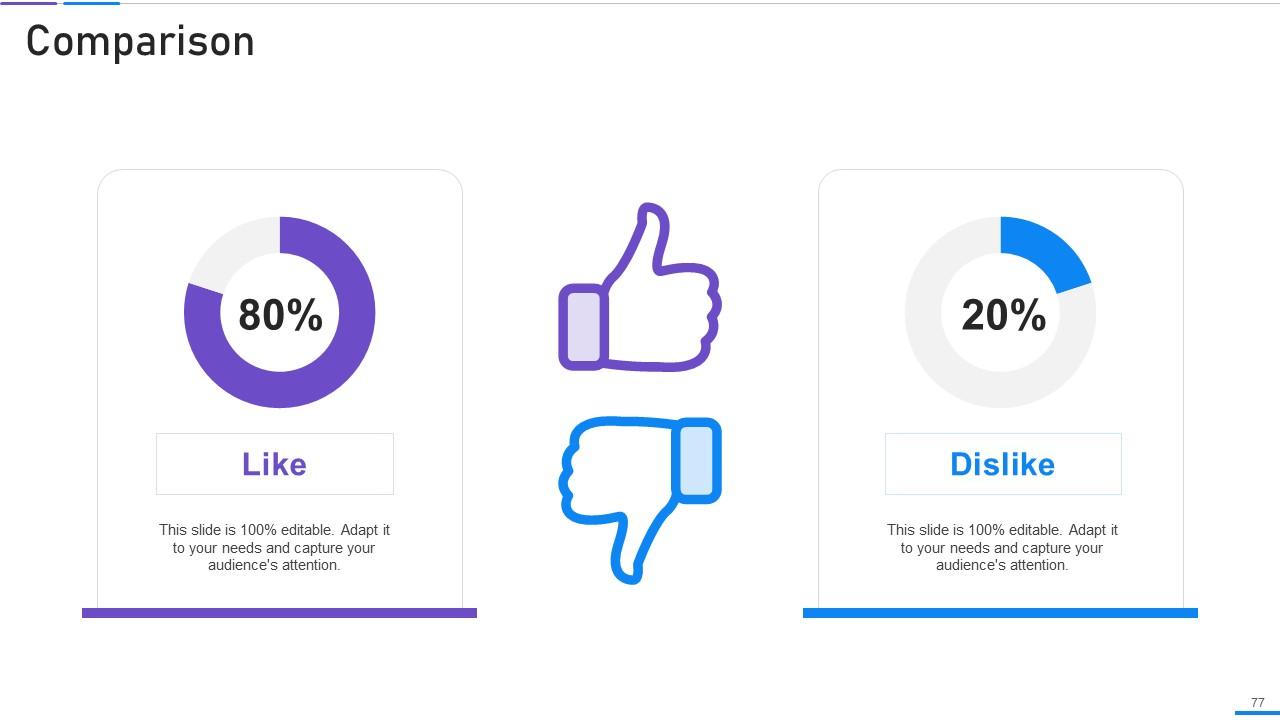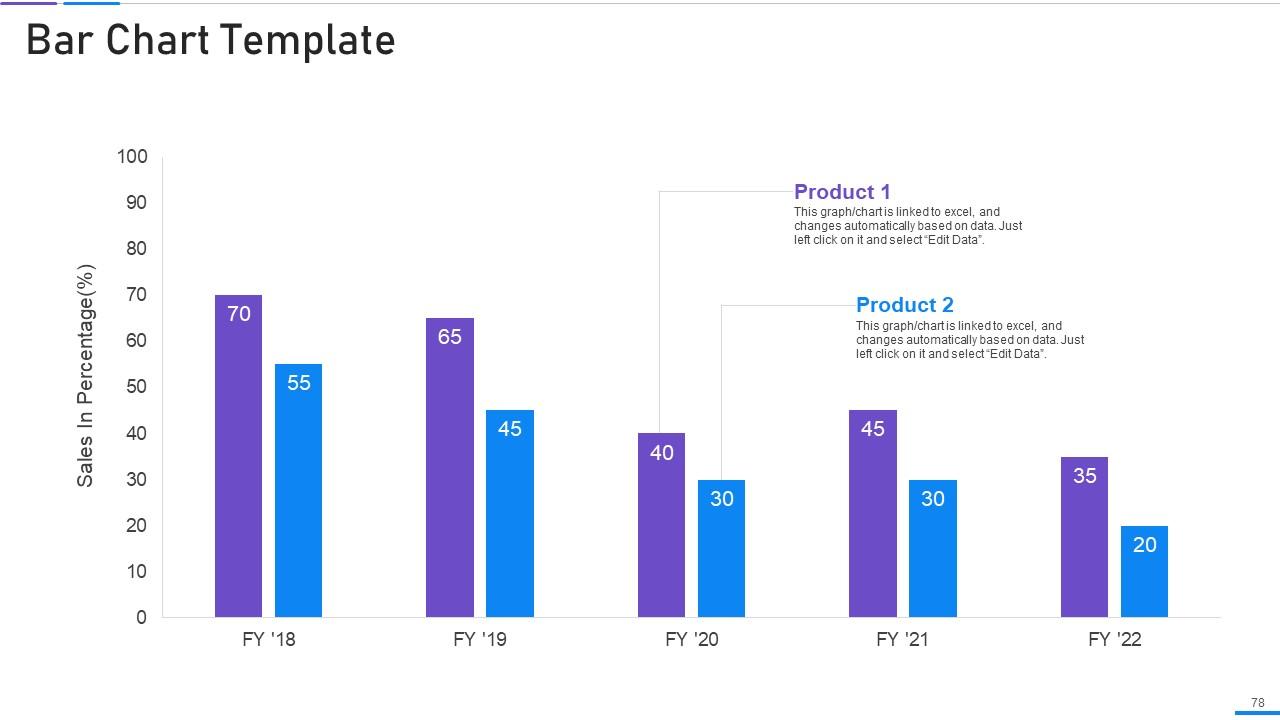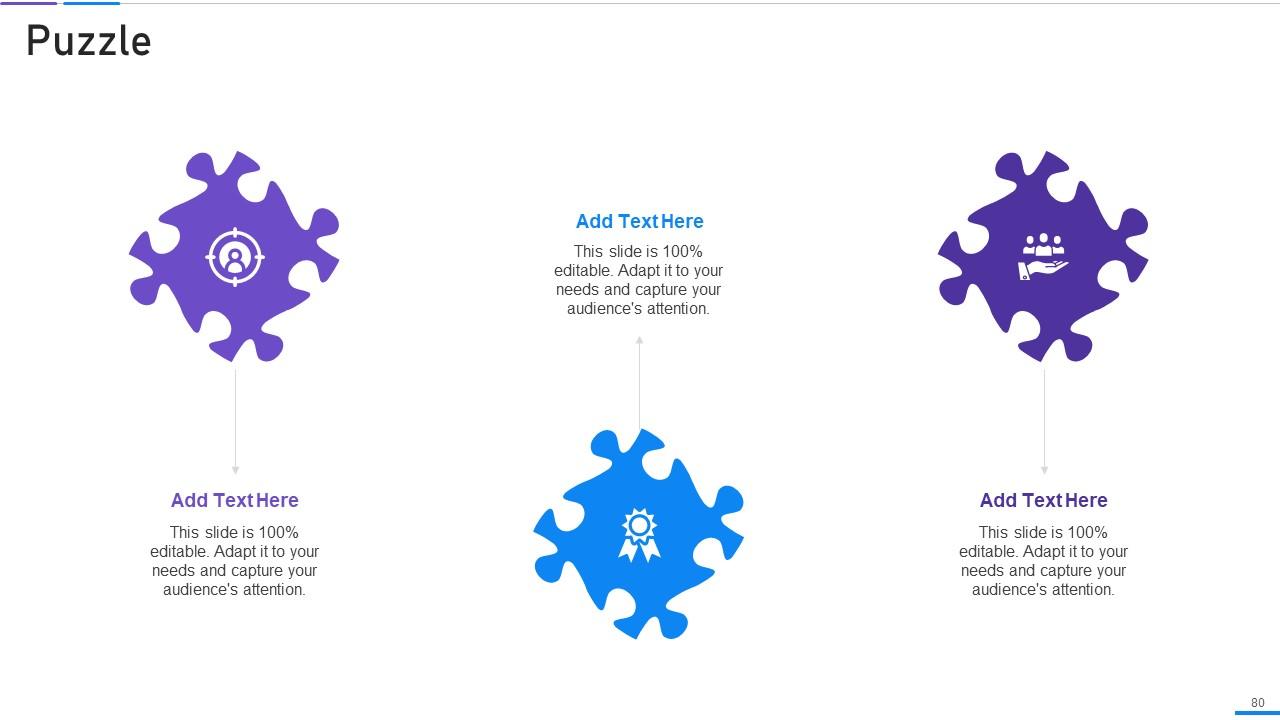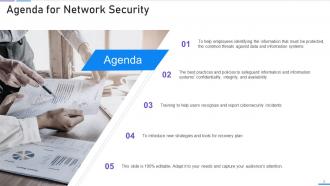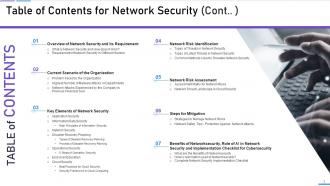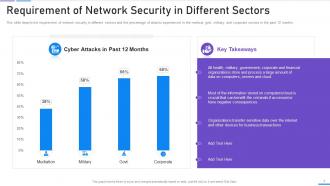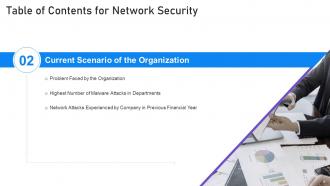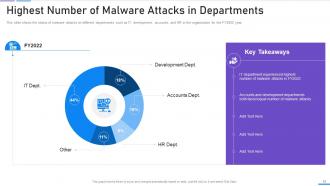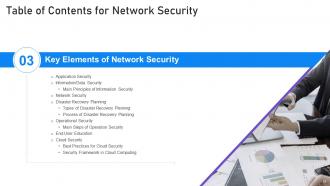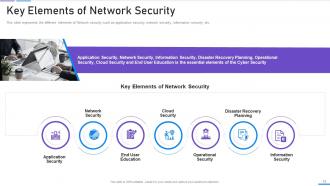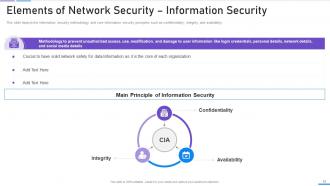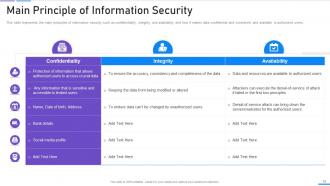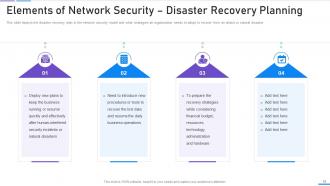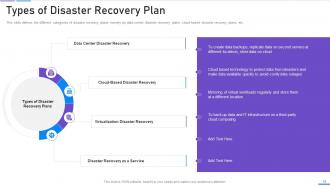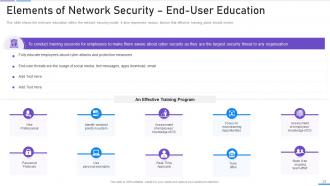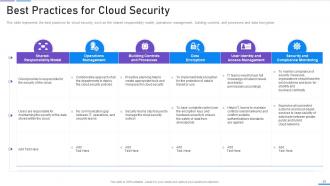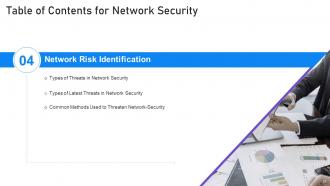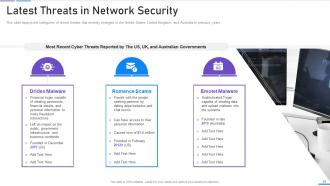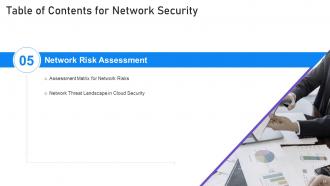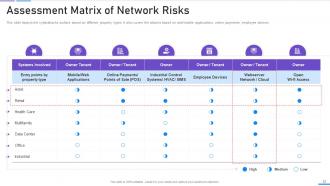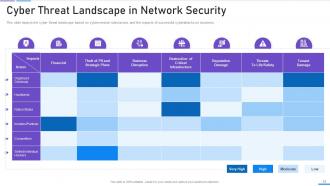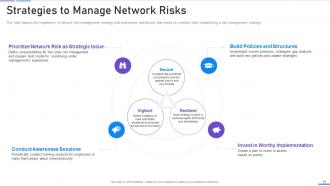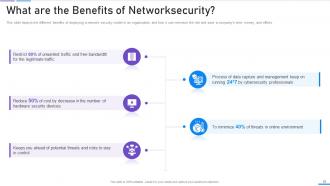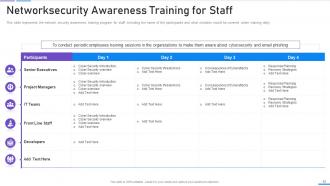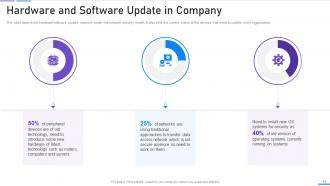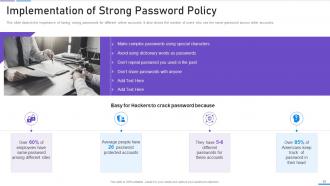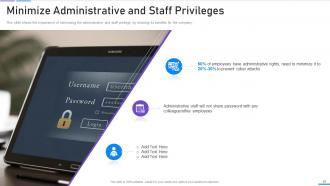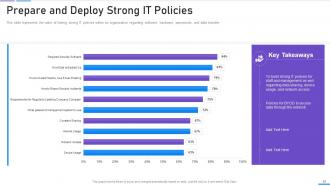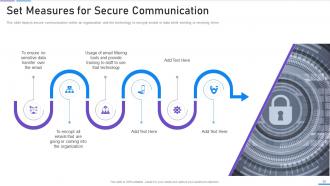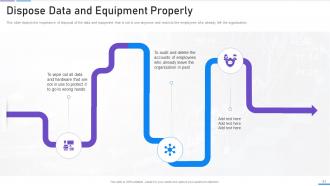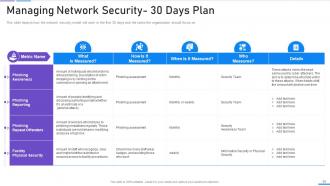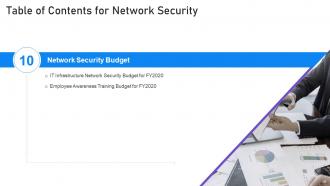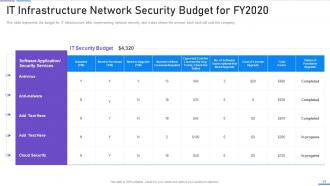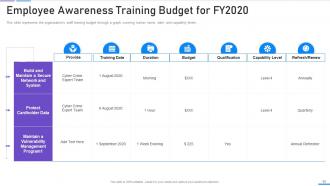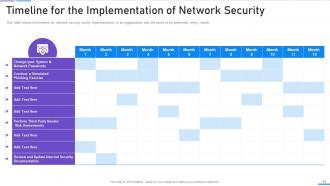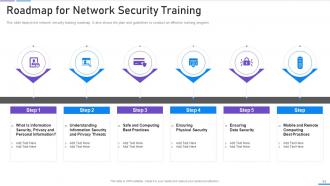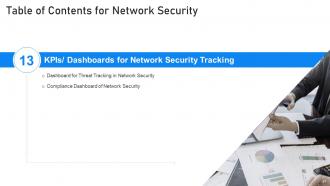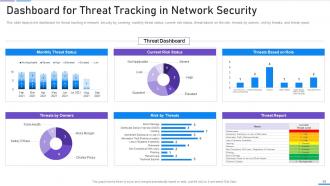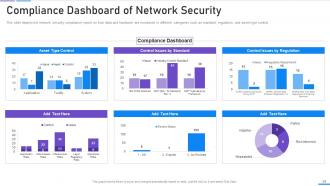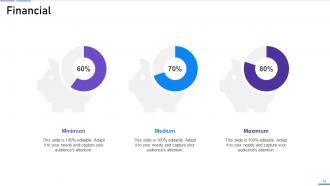Network security powerpoint presentation slides
Network Security protects electronic devices such as computers, servers, mobile gadgets, data, electronic systems, and networks from network attacks. This PowerPoint presentation illustrates important details about network security. This network security PowerPoint presentation will be helpful to throw light on the current scenario of the organization, the requirement of network security in different sectors, and its work. In addition, computer security PPT contains the critical elements of network security, network risk identification, and assessment, steps to mitigate those risks, benefits of network security, and automations role in network security. Further, this data security presentation comes with a checklist to implement network security in the organization, a 30-60-90-day plan to manage network security, and the budget to implement the same. The Information Security deck also showcases a roadmap to monitor network security and a timeline to implement network security in the organization. Lastly, this electronic information security PPT shows the effects of network security implementation on the organization and dashboard for threat tracking in network security. Get access now.
You must be logged in to download this presentation.
PowerPoint presentation slides
This complete deck covers various topics and highlights important concepts. It has PPT slides which cater to your business needs. This complete deck presentation emphasizes Network Security Powerpoint Presentation Slides and has templates with professional background images and relevant content. This deck consists of total of eighty one slides. Our designers have created customizable templates, keeping your convenience in mind. You can edit the color, text and font size with ease. Not just this, you can also add or delete the content if needed. Get access to this fully editable complete presentation by clicking the download button below.
People who downloaded this PowerPoint presentation also viewed the following :
Content of this Powerpoint Presentation
Slide 1: This slide introduces Network Security. State Your Company Name and begin.
Slide 2: This is an Agenda slide. State your agendas here.
Slide 3: This slide shows Table of Contents for Network Security.
Slide 4: This is another slide continuing Table of Contents for Network Security.
Slide 5: This slide highlights title for topics that are to be covered next in the template.
Slide 6: This slide defines the meaning of Network security and how it helps to prevent data through different methods and techniques.
Slide 7: This slide shows Requirement of Network Security in Different Sectors.
Slide 8: This slide highlights title for topics that are to be covered next in the template.
Slide 9: This slide shows the organization's current situation through the total losses experienced because of different cyberattacks.
Slide 10: This slide displays Highest Number of Malware Attacks in Departments.
Slide 11: This slide shows Cyber Attacks Experienced by Company in Previous Financial Year.
Slide 12: This slide highlights title for topics that are to be covered next in the template.
Slide 13: This slide represents the different elements of Network security such as application security, network security, information security, etc.
Slide 14: This slide defines application security and categories of application threats and tools to perform application security.
Slide 15: This slide displays Elements of Network Security – Information Security.
Slide 16: This slide represents the main principles of information security such as confidentiality, integrity, and availability.
Slide 17: This slide represents the network security element of Network security and different network security methods.
Slide 18: This slide presents Elements of Network Security – Disaster Recovery Planning.
Slide 19: This slide defines the different categories of disaster recovery plans, namely as data center disaster recovery plans, cloud-based disaster recovery plans, etc.
Slide 20: This slide represents the detailed process of a disaster recovery plan, how it should work, what points to keep in mind, etc.
Slide 21: This slide defines the operational security element of Network security.
Slide 22: This slide depicts the main steps of operational security, such as describing sensitive information, identifying potential risks, etc.
Slide 23: This slide presents the end-user education within the Network security model.
Slide 24: This slide shows Elements of Network Security – Cloud Security.
Slide 25: This slide represents the best practices for cloud security, such as the shared responsibility model, operations management, etc.
Slide 26: This slide shows Security Framework in Cloud Computing.
Slide 27: This slide highlights title for topics that are to be covered next in the template.
Slide 28: This slide presents the main types of threats in Network security, such as cybercrime, cyber terrorism, etc.
Slide 29: This slide depicts the categories of recent threats that recently emerged in the United States, United Kingdom, etc.
Slide 30: This slide displays Common Methods Used to Threaten Network-Security.
Slide 31: This slide highlights title for topics that are to be covered next in the template.
Slide 32: This slide depicts the cyberattacks surface based on different property types.
Slide 33: This slide presents Cyber Threat Landscape in Data Security.
Slide 34: This slide highlights title for topics that are to be covered next in the template.
Slide 35: This slide depicts the importance of cyber risk management strategy and procedures.
Slide 36: This slide shows Cyber Safety Tips - Protection Against Cyberattacks.
Slide 37: This slide highlights title for topics that are to be covered next in the template.
Slide 38: This slide presents the different benefits of deploying a Network security model in an organization.
Slide 39: This slide depicts the cyber protection of an organization through artificial intelligence.
Slide 40: This slide displays Complete Network Security Implementation Checklist.
Slide 41: This slide highlights title for topics that are to be covered next in the template.
Slide 42: This slide represents the Network security awareness training program for staff, including the name of the participants.
Slide 43: This slide presents Hardware and Software Update in Company.
Slide 44: This slide depicts the benefits of using antivirus software in the organization.
Slide 45: This slide displays the importance of having strong passwords for different online accounts.
Slide 46: This slide shows the importance of minimizing the administrative and staff privilege by showing its benefits for the company.
Slide 47: This slide displays Prepare Data Backup for Sensitive Information.
Slide 48: This slide depicts what factors will be considered while preparing a recovery planning of an organization.
Slide 49: This slide represents the value of having strong IT policies within an organization.
Slide 50: This slide depicts secure communication within an organization and the technology to encrypt emails.
Slide 51: This slide displays the importance of disposal of the data and equipment that is not in use anymore.
Slide 52: This slide depicts that the security of employees’ hardware or devices is also essential while applying the cyber security model.
Slide 53: This slide presents Define Access Control Measures for Employees.
Slide 54: This slide highlights title for topics that are to be covered next in the template.
Slide 55: This slide depicts how the Network security model will work in the first 30 days and the tasks the organization should focus on.
Slide 56: This slide represents the plan for 60 days after implementing the Network security model in the organization.
Slide 57: This slide depicts the 90 days plan of the Network security model in an organization and training compliance.
Slide 58: This slide highlights title for topics that are to be covered next in the template.
Slide 59: This slide represents the budget for IT infrastructure after implementing data security.
Slide 60: This slide displays the organization's staff training budget through a graph covering trainer name, date, and capability levels.
Slide 61: This slide highlights title for topics that are to be covered next in the template.
Slide 62: This slide displays Timeline for the Implementation of Network Security.
Slide 63: This slide depicts the Network security training roadmap.
Slide 64: This slide highlights title for topics that are to be covered next in the template.
Slide 65: This slide displays Impact on Organization After Implementing Network Security Strategy and Training.
Slide 66: This slide represents the current status of the cyber attacks in an organization after implementing the cyber security model.
Slide 67: This slide highlights title for topics that are to be covered next in the template.
Slide 68: This slide presents Dashboard for Threat Tracking in Network Security.
Slide 69: This slide depicts the Network security compliance report on how data and hardware are monitored in different categories.
Slide 70: This slide showcases Icons for Network Security.
Slide 71: This slide is titled as Additional Slides for moving forward.
Slide 72: This slide provides 30 60 90 Days Plan with text boxes.
Slide 73: This is Our Mission slide with related imagery and text.
Slide 74: This slide presents Roadmap with additional textboxes.
Slide 75: This is a Timeline slide. Show data related to time intervals here.
Slide 76: This slide shows Post It Notes. Post your important notes here.
Slide 77: This is a Comparison slide to state comparison between commodities, entities etc.
Slide 78: This slide presents Bar chart with two products comparison.
Slide 79: This is a Financial slide. Show your finance related stuff here.
Slide 80: This slide contains Puzzle with related icons and text.
Slide 81: This is a Thank You slide with address, contact numbers and email address.
Network security powerpoint presentation slides with all 86 slides:
Use our Network Security Powerpoint Presentation Slides to effectively help you save your valuable time. They are readymade to fit into any presentation structure.
FAQs
Network security refers to the set of methods, techniques, and technologies that an organization uses to secure its computer network infrastructure from unauthorized access, misuse, modification, or destruction. It is crucial because it protects sensitive and confidential data, prevents network downtime, and ensures business continuity by mitigating cyber threats, attacks, and vulnerabilities.
The four main elements of network security are application security, information security, network security, and operational security. Application security ensures the protection of applications and software from threats. Information security deals with securing confidential and sensitive data. Network security aims to protect the network infrastructure and devices from unauthorized access. Operational security ensures that the security protocols and procedures are followed correctly to mitigate cyber threats.
Recent threats to network security include malware, phishing, ransomware, and social engineering attacks. These threats are continuously evolving and becoming more sophisticated. Attackers are using advanced techniques to bypass security measures and exploit vulnerabilities.
Organizations can prevent network security threats by implementing security best practices, such as using strong passwords, regularly updating software and hardware, deploying anti-malware and anti-virus software, and providing regular security awareness training to employees. Additionally, using multi-factor authentication, implementing access control measures, and conducting regular vulnerability assessments can also help prevent network security threats.
The benefits of deploying a network security model in an organization include protecting sensitive data and intellectual property, mitigating cyber risks and threats, ensuring business continuity, and enhancing customer trust and confidence. A robust network security model can also help the organization comply with regulatory requirements and reduce financial losses due to cyber attacks.
-
Great product with effective design. Helped a lot in our corporate presentations. Easy to edit and stunning visuals.
-
Excellent Designs.





